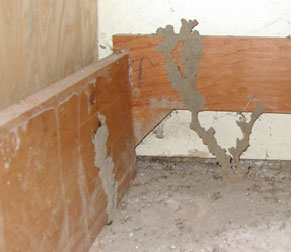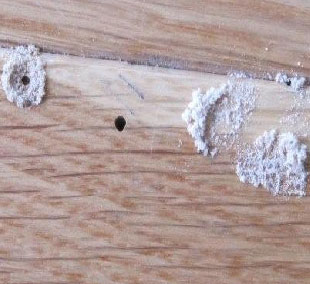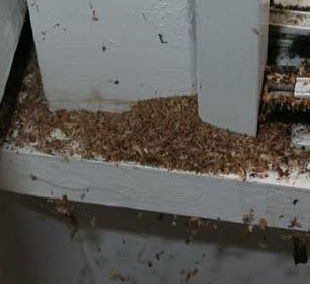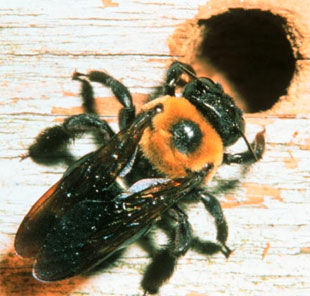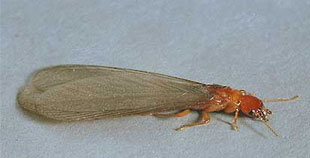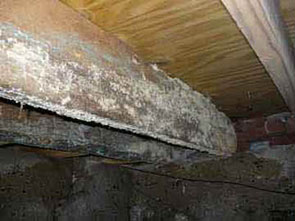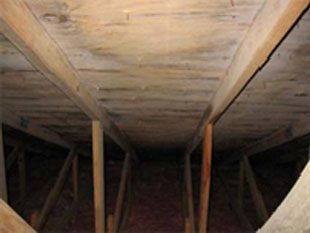FAQ
- Do I live in an area with termites?
- What do termites look like?
- How do I detect wood destroying insects?
- What is Wood Fungus and how do I detect it?
- How can I prevent Wood Fungus?
- What is a Vapor Barrier?
Do I live in an area with termites?
What do termites look like?
How do I detect wood destroying insects?
Subterranenan Termites
They damage almost anything that contains cellulose, the main component of wood, including wood paneling, paper products, cardboard boxes and the paper covering of sheet rock.
Look for:
- Narrow mud tubes on both the interior and exterior of your walls and foundation.
- Swarms, mainly in Spring
- After swarm, discarded wings indoors or outdoors.
Drywood Termites
These termites usually live inside wood and can be much harder to locate or detect. Best way to detect is the presents of fecal pellets about the size of table salt grains
Powderpost Beetles
Look for powdery deposits of frass and pinhead-size holes made by adult beetles exiting the wood. The peak time for beetles to emerge is May through August.
Carpenter Ants
Look for swarmers in the spring and for piles of frass—a mixture of wood shavings and fecal matter. Rustling sounds may indicate a nest.
Carpenter Bees
Carpenter bees burrow into wood—preferably unfinished—to make nests. They drill almost perfectly round entry holes about 3/8 of an inch in diameter that lead to tunnels where they lay their eggs. Look for them hovering near eaves, decks, trim and siding. Carpenter bees are less likely to cause serious structural damage than termites or carpenter ants. However, their entry holes can allow moisture to enter the wood.
Dampwood Termites
Dampwood termites typically infest damp and decaying timber. Dampwood termites as the name suggests, will only infest wood with a high moisture content. Dampwood termites require wood with a high moisture content. Wood in contact with the ground or with a constant moisture source is most prone to attack. Dampwood termites attack the wood directly and usually do not burrow in the soil.
What is Wood Fungus and how do I detect it?
Leaves wood with a bleached appearance and a spongy and stringy texture. For fungus, the application of Borate wood preservative is a simple and effective control method. Borate is highly toxic to all wood destroying organisms and, unlike other wood preservatives, they are non-volatile, odorless, and are less toxic than table salt. They do not discolor the wood, are non-corrosive, environmentally safe and known to be effective in controlling more than 45 different species of wood decaying fungus. They are also effective in controlling beetles, termites, carpenter ants and a host of other insects.
How can I prevent Wood Fungus?
Vapor Barriers in fungus control subareas are critical to the integrity of the home. That’s why homeowners need to protect their substructure from damage that is caused by excess moisture. Moisture can cause significant damage to the home.
Here’s how:
Moisture can attack wood and trigger decay, fungus and wood rot resulting in structural damage. The foundation can crack. Floors can warp. High moisture levels under the home can lead to mold, mildew and cause the spread of fungus spores leading to odors and unhealthy air conditions. Mold spores can aggravate allergies, asthma and hay fever. Moisture in the crawlspace can dampen insulation reducing its effectiveness. Dark, damp areas are hospitable environments for termite and other wood-destroying pests.
What is a Vapor Barrier?
Vapor (moisture) Barrier- A polyethylene plastic sheet can be installed on the soil of the crawlspace to help retard moisture from seeping up through the ground. When installing vapor retarders, use a 4-6 mil polyethylene vapor barrier installed on 80% – 90% of the floor of the crawlspace. The polyethylene should not completely cover the ground. If the moisture supply is completely cut off, hardwood floors and other wood may shrink excessively. A vapor barrier that completely covers the floor can hold too much moisture and never get a chance to dry. The ground needs some air to breathe.



